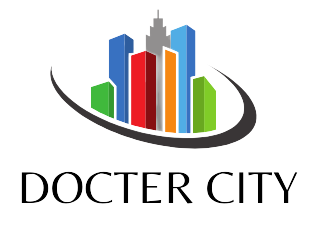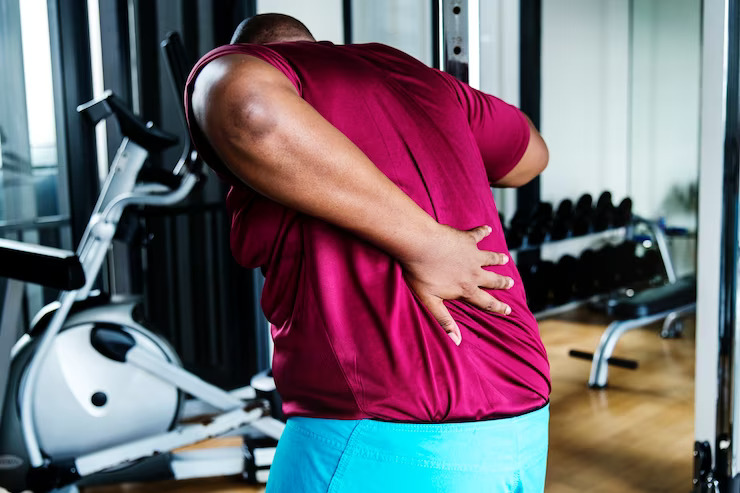Introduction
Deadlift Back Pain – Deadlifts are a fantastic compound exercise that can yield tremendous gains in strength and muscle development. However, for many individuals, they also come with the risk of experiencing back pain. In this comprehensive guide, we’ll explore the various factors that can lead to deadlift-related back pain and provide practical, human-centered solutions to help you enjoy the benefits of deadlifting while reducing the possibility of pain or harm.
Anatomy of the Deadlift
Before we delve into the causes of back pain associated with deadlifts, it’s essential to understand the mechanics of this exercise. A proper deadlift primarily targets the muscles in your lower back, glutes, hamstrings, and core. However, performing deadlifts with improper form can put undue stress on the lower back, leading to discomfort or pain.
Common Causes of Deadlift Back Pain
- Poor Form: The most prevalent cause of deadlift-related back pain is improper form. This includes rounding your lower back, neglecting core engagement, and lifting with your back instead of your legs.
- Overtraining: Deadlifting too frequently or with excessive weight can lead to overtraining and muscle fatigue, increasing the risk of injury.
- Muscular Imbalances: Weakness or imbalances in the muscles supporting your spine can make you more susceptible to back pain.
- Inadequate Warm-Up: Failing to warm up sufficiently before deadlifting can leave your muscles and joints unprepared for the demands of the exercise.
Solutions to Prevent Deadlift Back Pain
- Proper Form: The foundation of safe deadlifting lies in maintaining a neutral spine, engaging your core, and lifting with your legs. Seek advice from a certified trainer to be sure you’re using proper form.
- Progressive Overload: Gradually increase the weight you lift over time, allowing your body to adapt and reducing the risk of overtraining.
- Core Strengthening: Incorporate core-strengthening exercises like planks and Russian twists into your routine to provide better support for your spine.
- Warm-Up Routine: Prioritize a thorough warm-up that includes dynamic stretching and mobility exercises to prepare your muscles and joints.
- Rest and Recovery: Adequate rest and recovery are essential for preventing overuse injuries. Ensure you get enough sleep and incorporate rest days into your training program.
Signs of Deadlift-Related Back Pain
Recognizing the early signs of back pain is crucial for preventing more serious injuries. Common symptoms include:
- Lower back ache, either dull or intense.
- Stiffness and discomfort.
- Pain that worsens with movement or lifting.
- Radiating pain into the hips or legs.
Treating Deadlift-Related Back Pain
If you experience back pain from deadlifting, it’s essential to address it promptly to prevent it from becoming a chronic issue. Here are some steps to take:
- Rest: Give your back a break from lifting to allow it to heal.
- Ice and Heat: Apply ice to reduce inflammation in the first 48 hours, then switch to heat to relax tense muscles.
- Pain Medication: Over-the-counter pain relievers can help manage pain and inflammation.
- Physical Therapy: A physical therapist can develop a customized rehabilitation plan to strengthen your back and improve mobility.
- Reevaluate Form: Assess your deadlift form with a trainer to identify and correct any issues.
When to Seek Medical Attention
While most cases of deadlift-related back pain can be managed with rest and self-care, some situations require medical attention. See a medical expert if you encounter any of the following symptoms:
- Severe or worsening pain.
- Legs or feet that are numb or tingly.
- Loss of bowel or bladder control.
Frequently Asked Questions (FAQs)
1. Can deadlifting cause permanent back damage?
Deadlifting, when performed correctly and progressively, should not cause permanent back damage. However, improper form or excessive weight can lead to injuries. It’s crucial to prioritize proper technique and gradual progression. You can also consider hip arthroscopic surgery if the pain exceeds your threshold.
2. How can I improve my deadlift form?
Improving deadlift form involves maintaining a neutral spine, engaging the core, and using your legs to lift. Consider working with a certified trainer or coach for personalized guidance and feedback.
3. Are there any alternative exercises to deadlifts that are gentler on the back?
Yes, several exercises can target similar muscle groups without as much strain on the lower back. These include kettlebell swings, Romanian deadlifts, and trap bar deadlifts.
4. How long does it typically take to recover from deadlift-related back pain?
The length of recovery varies according on the injury’s severity. Mild cases may improve in a few days to a couple of weeks, while more serious injuries may take several weeks to months. Consult a healthcare professional for a precise estimate.
5. Should I use a lifting belt for deadlifts?
Lifting belts can provide additional support for the lower back during heavy lifts. However, they should not be a substitute for proper form. If you choose to use one, make sure it’s worn correctly and in conjunction with good technique.
Conclusion
Deadlifting is a powerful exercise that can transform your physique and strength, but it should be approached with caution and proper technique. By understanding the causes of deadlift-related back pain and implementing the solutions provided in this article, you can enjoy the benefits of deadlifting while minimizing the risk of injury. Remember that safety should always be your top priority in any fitness endeavor, and seeking guidance from qualified professionals is key to achieving your fitness goals without compromising your health.


